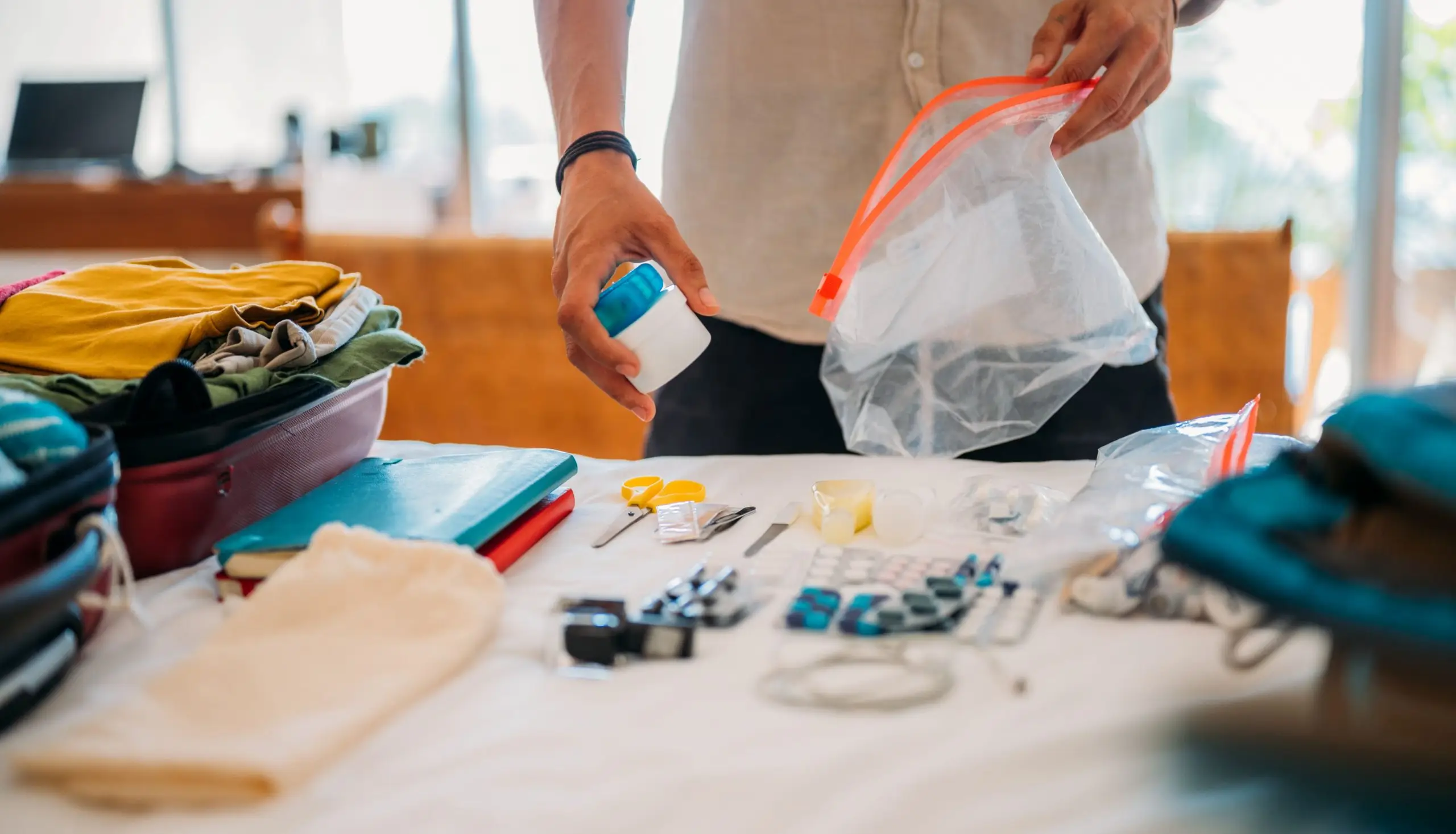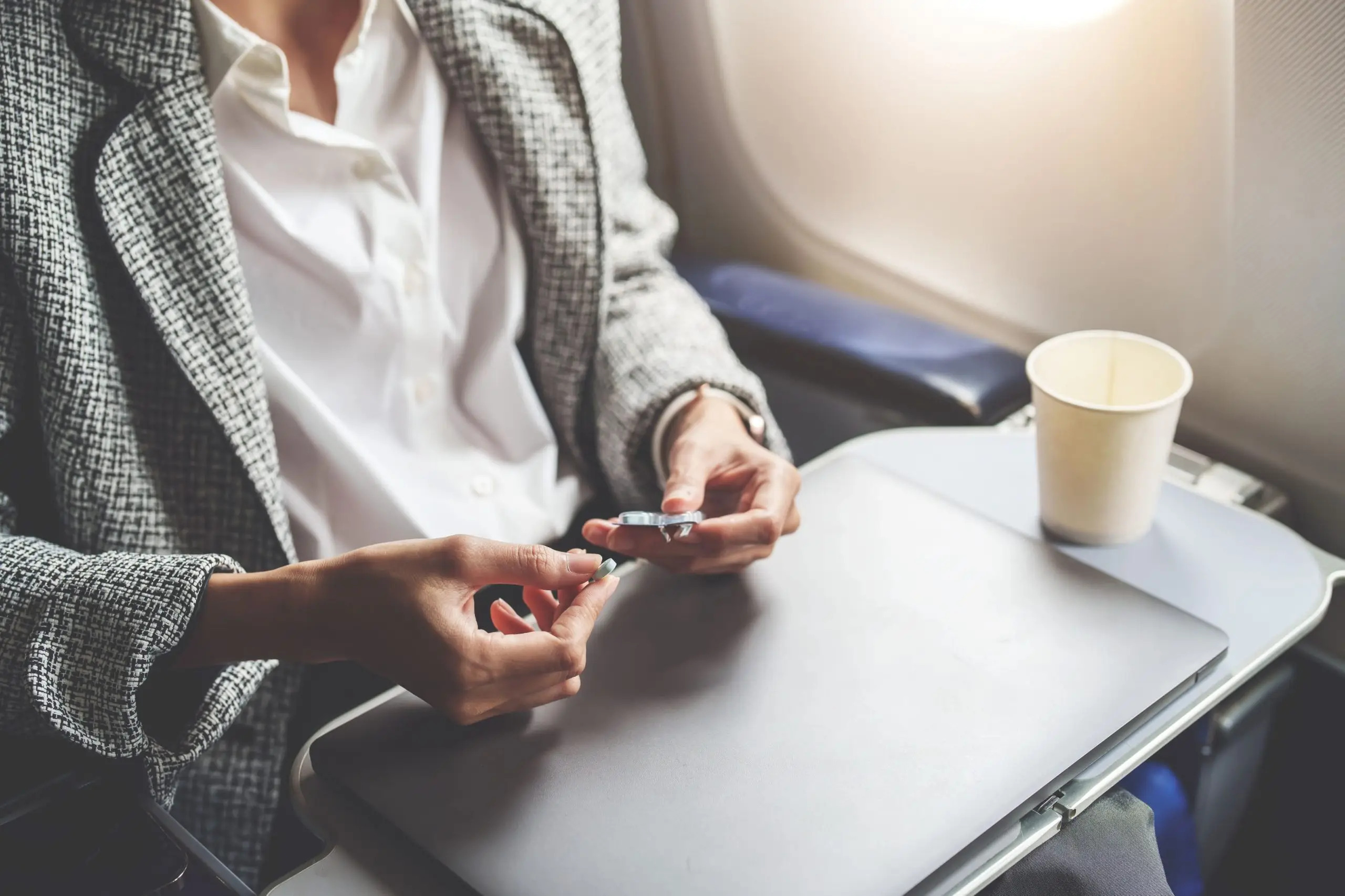At a glance: Flying with high blood pressure is usually safe if it’s well managed. Cabin pressure can lower oxygen levels and put extra strain on the heart, which might lead to dizziness, headaches, shortness of breath or deep vein thrombosis (DVT). Key things to keep in mind are having medication to hand, planning for time zone changes and using compression stockings on longer flights.
Heading off on holiday should be all about fun, but for people with high blood pressure, it often comes with an added layer of health concerns.
It’s natural to worry about how your condition might be affected when you fly. That’s because you need to consider several factors – like cabin pressure changes, the need to sit still for long periods, and having to figure out medication timing when you cross time zones. There’s also the added risk of deep vein thrombosis (DVT).
The good news is, you don’t have to let any of this hold you back. Whether you’re planning a short break or a longer holiday, you can travel reassured with the right support.
Can you fly with high blood pressure?
Generally, it’s safe to fly with high blood pressure as long as you’re managing it with medication – but taking precautions is important. Plane cabins are pressurised to around 6,000–8,000 feet, which can cause slight drops in oxygen levels. This can affect circulation, making the heart work harder.
For those with high blood pressure, this extra strain may cause dizziness, headaches, shortness of breath, or, in rare cases, hypoxia (low oxygen levels) and DVT.
Signs to be mindful of
Warning signs to watch out for during a flight include:
- chest pain or tightness
- severe headache
- shortness of breath
- swelling or pain in the legs
If you experience any of these symptoms while flying, it’s important to let the cabin crew know immediately.
Travel tips for people with high blood pressure
1. Preparing for your flight
- See your GP first: a quick check-up before flying can help you understand if it’s safe to travel and whether your medication needs adjusting.
- Know your limits: if your blood pressure is very high (above 180/120 mmHg), most doctors recommend avoiding air travel until it’s under control.
- Get the right travel insurance: make sure you declare your medical conditions – so you’re covered if you ever need to make a claim.
2. Packing essentials for a safe journey
- Carry enough medication: pack extra medication in case of any delays – and always keep it in your hand luggage for easy access.
- Take necessary documentation with you: prescriptions, a doctor’s note and your travel insurance validation certificate can all be helpful in emergencies.
- Manage time zones: if travelling long-haul, plan your medication schedule in advance.
- Pack health essentials: a blood pressure monitor can be useful for longer trips, and compression stockings can help prevent DVT.
3. Managing blood pressure
- Stay active: small stretches and short walks up the aisle can make a big difference to your circulation.
- Choose the right seat: booking an aisle seat or one with extra legroom will make moving around easier.
- Watch what you drink and eat: drink water, limit alcohol and caffeine, and avoid salty snacks. Packing a few healthier options of your own can make the journey easier.
4. Post-flight recovery
- Ease back into activity: don’t rush straight into strenuous exercise or long excursions right after you arrive.
- Look out for symptoms: if you feel dizzy, experience swelling or have chest pain, seek medical help immediately.
- Handle jet lag wisely: try and stick to a consistent sleep routine, stay hydrated and avoid relying on caffeine to stay awake.
5. Emergency preparedness while travelling
- Know where to go: make a note of local hospitals or clinics before you set off, so you won’t be left searching in an emergency.
- Carry medical ID: a bracelet or card with your health condition and medication details can be lifesaving in emergencies.
- Learn emergency numbers: they may differ from what you’re used to – for example, 112 in Europe or 911 in the US. It’s also a good idea to keep our emergency numbers handy before you fly.
Why travel insurance is your safety net
Travel insurance can make a big difference when you’re managing high blood pressure abroad. With the right policy, you’ll have practical support for:
- medical emergencies and hospital costs abroad: healthcare in other countries can be extremely expensive. Travel insurance ensures you’re not left with overwhelming bills if you need treatment.
- cancellations and delays: if your doctor advises you not to travel due to a sudden spike in blood pressure or another complication, cancellation cover can help you claim back costs.
- medication replacement: If your blood pressure medication is lost, stolen or delayed in transit, your insurance can help cover the cost of replacements.
Why choosing the right policy matters
Not all policies cover pre-existing conditions like high blood pressure. That’s why it’s important to:
- read the policy documents: make sure high blood pressure (and any related health conditions, such as heart disease) is covered.
- declare your condition before buying: being open about your high blood pressure means your policy can fully support you if something unexpected happens on your trip.
- tailor your cover to your trip: think about the activities you’ll be doing, the length of your journey and whether you’ll need additional cover, such as for cruises or multiple trips a year.
Avanti Travel Insurance can cover high blood pressure alongside more than 1,300 other pre-existing conditions. Our policies include support for medical emergencies, cancellations and even lost medication while you’re away.
Key takeaways
Flying with high blood pressure doesn’t have to be stressful if you take the right precautions. Always remember to check in with your doctor, look after yourself during the journey and make sure to declare your conditions when reviewing travel insurance options for pre-existing medical conditions.




